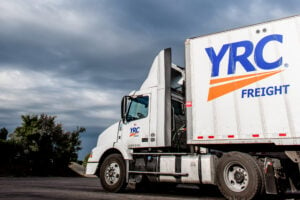All drivers, but especially commercial drivers, should be careful on the road at all times.
That’s the message behind transportation policy in the United States in general — it resonates with the way lawmakers address fatigue in Hours of Service and other regulatory laws in the trucking industry. And for good reason: fatigue-related accidents happen every day, and cost thousands of lives.
But in recent years, the public has generally associated the problem of fatigue on American highways with collisions of large trucks and buses. However, studies show fatigue isn’t even among the top five causes of truck crashes. In fact, four-wheel drivers tend to be more fatigued, more often than commercial drivers. We mentioned the fact that four-wheel motorists are responsible for the majority of accidents involving trucks in a recent post about red light camera policies– and the same applies to accidents resulting from fatigue. Read on to find out more on the uShip blog.
What are the primary causes of truck collisions?
According to the Federal Motor Carrier Safety Administration, the majority of large truck collisions occur due to driver decisions. The most common causes include not maintaining enough space between vehicles when in motion, and driving too fast for conditions on the road. Thereafter, most common causes for truck collisions ARE related to the driver’s mistakes but do not include fatigue. Roadway problems account for 20% of associated factors, while fatigue accounts for 13%.
While that statistic demonstrates how poorly the industry is managing fatigue, it’s clear that resources need to be a very serious percentage that should be zero.
What does this mean for drivers?
To start, expect continued advocacy for better driver training, and ongoing changes to Hours of Service regulations. Even though fatal crashes involving large trucks have declined over time, there’s a big push for infrastructure and safety development in the US. Policy changes appear to have worked so far. In 2010, 3,484 large trucks were involved in fatal crashes, according to the FMCSA, representing a 25 percent decline between 2007 and 2010 alone.
In 2007 the FMCSA conducted the Large Truck Crash Causation Study (LTCCS) in which 963 crashes were closely researched and reported on in the United States.
In the LTCCS, one-half of the collisions studied were accidents between a large truck and a “passenger vehicle” (car, pickup, van or SUV).The LTCCS study found that fatigue affected passenger vehicles twice as often as with large truck drivers. The top ten associated factors involved in these crashes are as follows, in descending order according to how often they occured for the large truck:
Top Ten Reasons for Large Truck Crashes
1. Interruption of the traffic flow
2. Unfamiliarity with roadway
3. Inadequate surveillance
4. Driving too fast for conditions
5. Illegal maneuver
6. Inattention
7. Fatigue
8. Illness
9. False assumption of other road user’s actions
10. Distraction by object or person inside the vehicle
Safety regulations and existing policies are undergoing a $1 billion revamp after the MAP-21 transportation reauthorization bill was signed into law in 2012 by President Obama. More organic trucker safety policies– changes like improved road conditions and higher speed limits– will likely improve and change the face of truck safety through the end of 2013 and 2014.


